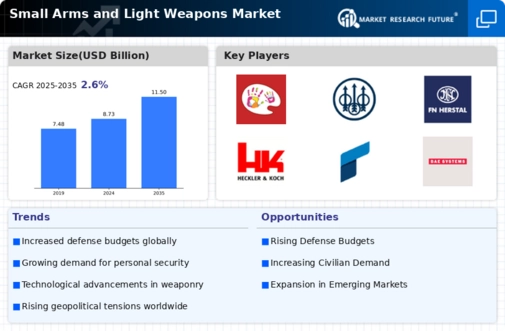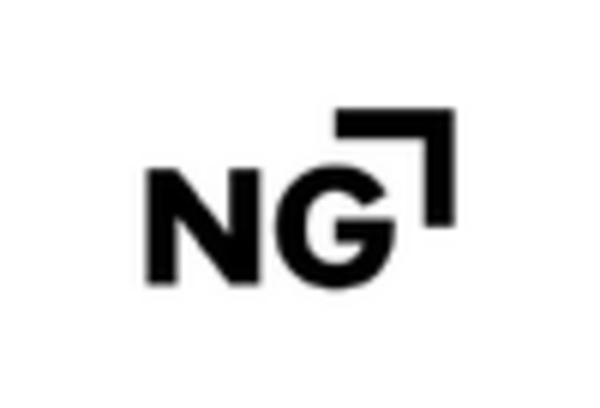Rising Security Concerns
The Small Arms and Light Weapons Market is significantly impacted by escalating security concerns worldwide. The rise in terrorism, organized crime, and civil unrest has prompted governments and private entities to enhance their security measures. This heightened focus on security has led to an increased demand for small arms and light weapons, as they are essential for law enforcement and military operations. Data suggests that regions facing instability are witnessing a surge in procurement activities, as authorities seek to equip their forces with effective tools to combat threats. Consequently, the Small Arms and Light Weapons Market is poised for growth as security concerns continue to drive demand for reliable and efficient weaponry.
Technological Innovations
Technological advancements are reshaping the Small Arms and Light Weapons Market, introducing new capabilities and enhancing existing products. Innovations such as smart weapons, modular designs, and improved materials are becoming increasingly prevalent. These advancements not only improve the performance and reliability of small arms but also attract interest from military and law enforcement agencies seeking cutting-edge solutions. The integration of technology into weapon systems is likely to create new market opportunities, as manufacturers strive to meet the evolving demands of their customers. As a result, the Small Arms and Light Weapons Market is expected to witness a transformation driven by these technological innovations, potentially leading to increased competition and product differentiation.
Increasing Defense Budgets
The Small Arms and Light Weapons Market is experiencing a notable surge in defense budgets across various nations. Governments are prioritizing military modernization and enhancing their defense capabilities, which directly influences the demand for small arms and light weapons. For instance, recent reports indicate that several countries have allocated substantial portions of their budgets to procure advanced weaponry, thereby stimulating market growth. This trend is particularly evident in regions with ongoing conflicts or heightened security concerns, where the need for effective and reliable small arms becomes paramount. As nations invest in their defense sectors, the Small Arms and Light Weapons Market is likely to benefit from increased procurement activities, leading to a robust market environment.
Emerging Markets and Demand Growth
Emerging markets are becoming increasingly important for the Small Arms and Light Weapons Market, as they exhibit a growing demand for military and security solutions. Countries in regions such as Asia and Africa are investing in their defense capabilities, driven by economic growth and regional security challenges. This trend is reflected in the rising procurement of small arms and light weapons, as these nations seek to bolster their military readiness. Market data indicates that the demand for small arms in these regions is expected to grow significantly, presenting lucrative opportunities for manufacturers. As emerging markets continue to develop, the Small Arms and Light Weapons Market is likely to experience a shift in focus, with increased attention on these high-potential regions.
International Arms Trade Regulations
The Small Arms and Light Weapons Market is influenced by international arms trade regulations, which aim to control the proliferation of weapons. These regulations can create both challenges and opportunities for manufacturers and governments. On one hand, stringent regulations may limit the availability of certain products, impacting market dynamics. On the other hand, compliance with these regulations can enhance the credibility of manufacturers and foster international partnerships. Countries that adhere to these regulations may find themselves in a favorable position to engage in trade, thereby expanding their market reach. Consequently, the Small Arms and Light Weapons Market must navigate these regulatory landscapes to capitalize on potential growth opportunities while ensuring compliance.


















Leave a Comment